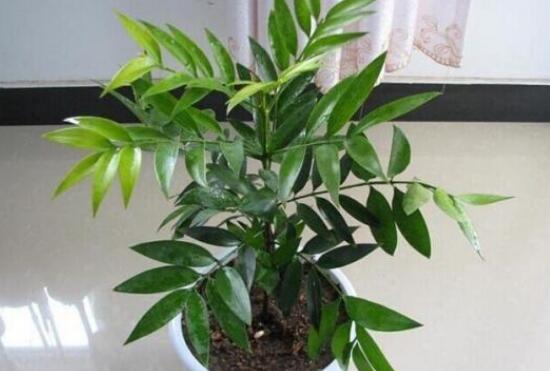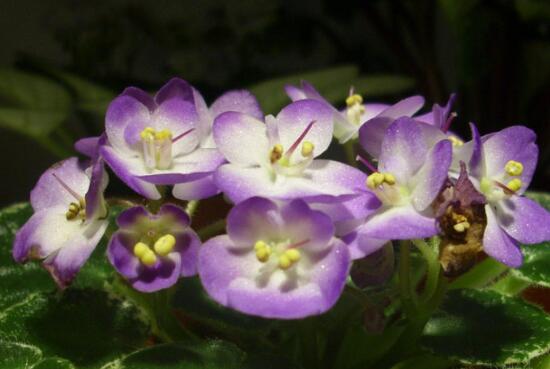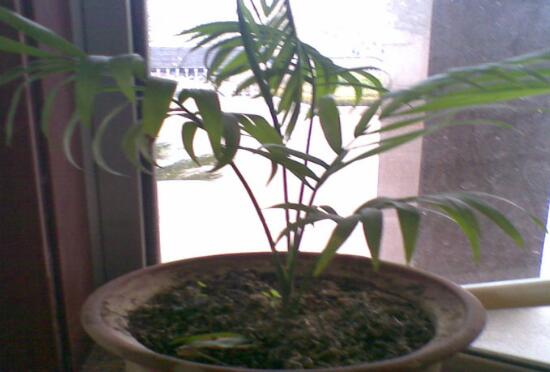What about the yellowing of bamboo and cypress leaves, replenishing light / regulating temperature / spraying with diseases and insect pests
I believe we are no stranger to bamboo and cypress. It is a very beautiful foliage plant, which is often made into bonsai and kept indoors. The branches and leaves of bamboo and cypress are green and the plant shape is beautiful, so when its leaves are yellow, the ornamental property will be greatly reduced, and it is not conducive to healthy growth, what about the yellow leaves of bamboo and cypress? Today, the editor is here to solve this problem for everyone.
What if the leaves of bamboo and cypress turn yellow

Generally speaking, there are six reasons for the yellowing of bamboo and cypress leaves: if it is caused by environmental discomfort, keep it in the most suitable environment for growth; if it is caused by lack of light, supplement light while avoiding strong light; when there is insufficient water and fertilizer, appropriate amount of watering and fertilization; temperature should be adjusted in time when the temperature is inappropriate; if it is diseases and insect pests, spray should be used to prevent and control.
Second, the causes and solutions of the yellowing of bamboo and cypress leaves.
1. Environmental discomfort
To talk about the reason why the leaves of bamboo and cypress turn yellow, we should first think about the environment. Nowadays, many of the potted plants of flower friends are bought online, which can easily lead to large geographical cross-clothing, great changes in the environment, and the emergence of yellow leaves because the plants can not adapt for a while.
Solution: when the newly bought potted leaves turn yellow, you should provide the most suitable environment for its growth according to the growth habits of bamboo and cypress, and soon the plant will return to health.
2. Lack of light
Bamboo and cypress is very shady, suitable for maintenance in semi-shade, but no matter how shady it is, it also needs light. Once in the shade for a long time, the leaves of bamboo and cypress will turn yellow and white, and the branches will be slender and unornamental.
Solution: if the yellowing of bamboo and cypress leaves is caused by lack of light, we only need to supplement the light, and it is best to give it 1-2 hours of astigmatism every day.
3. Insufficient watering
Bamboo cypress likes a humid environment, and during its growing season, we should water it frequently to keep the basin soil moist. Once underwatered, the old leaves of bamboo and cypress will wither and fall off from the bottom up.
Solution: replenish water in time and keep the soil moist. However, bamboo and cypress avoid stagnant water, so we should not water too much, and it is appropriate to pour thoroughly when the topsoil is slightly dry.
4. Insufficient fertilization
Although bamboo and cypress do not have high requirements for fertilizer, timely fertilization can keep the leaf color dark green. If you do not apply fertilizer for a long time, the leaf tip is easy to turn yellow.
Solution: if the bamboo and cypress leaves turn yellow caused by insufficient fertilization, we should apply some acidic fertilizer in time, and the irrigation solution is the best, so as to apply less frequently.
5. Temperature discomfort
① temperature is too high: bamboo and cypress like warm environment, it is not resistant to high temperature, once the growth temperature exceeds 35 ℃, its leaf surface or tip will turn yellow, dry or appear spots. Solution: move the bamboo and cypress to a shady place in time for maintenance, and after it slows down, water it appropriately.
② temperature is too low: bamboo and cypress are not cold-resistant. When the winter temperature is lower than 10 ℃, it will enter the dormant period. When the temperature is lower than 2 ℃, bamboo and cypress are prone to frostbite, resulting in yellow leaves. Solution: move the bamboo and cypress to a warmer place indoors, adjust the temperature to more than 10 ℃, and the plant will soon return to health.
6. Diseases and insect pests
In indoor culture of bamboo and cypress, due to poor environment, improper maintenance and other reasons, plant leaves are prone to red spiders, shell insects, anthracnose, leaf spot and other diseases and insect pests, which will cause local scorched yellow leaves.
Solution: we only need to identify specific diseases and insect pests, and then spray them. As for what kind of medicine to spray, you can refer to the pest control of bamboo and cypress.
Generally speaking, the breeding method of bamboo and cypress is not difficult, but it does not mean that it can be raised casually. If its leaves are evergreen and do not turn yellow, we must pay attention to the light, water, fertilizer and temperature. Of course, don't worry when you find yellow leaves, just solve it according to the above method. With regard to the yellowing of bamboo and cypress leaves, this is the end of the editor's introduction, hoping to give you some help.
What if the leaves of bamboo and cypress turn yellow?
One of the reasons for the yellowing of bamboo and cypress leaves and its treatment: chronic water shortage of bamboo and cypress
The specific performance is that the leaf tips or edges of bamboo and cypress are withered and dry, while the old leaves are withered and yellow and fall off from the bottom up.
Solution: timely watering to keep the soil moist, but avoid stagnant water, and it is appropriate to water thoroughly when the topsoil is slightly dry.
The second reason: bamboo and cypress lack of light.
If there is no light for a long time, the leaves will turn yellow and white, and the branches are slender and not easy to blossom.
Solution: after gently rinsing the leaves, scatter the plant as far as possible to the range of better light.
The third reason: the high temperature causes the leaves of bamboo and cypress to turn yellow.
When the temperature exceeds 35 °C, the leaves or tips of bamboo and cypress will be yellow, dry or spotted.
Solution: move the bamboo and cypress to a cool place for maintenance to avoid direct glare.
Reason 4: low temperature causes yellowing of bamboo and cypress leaves
When the temperature is about 10 °C, the bamboo and cypress will enter the dormancy period, and if the temperature is lower than 2 ℃, it is easy to frostbite or freeze to death.
Solution: move the bamboo and cypress to a warmer place indoors to prevent the cold wind.
The fifth reason: bamboo and cypress lack of fertilizer for a long time.
Without meeting the water and fertilizer needs of bamboo and cypress, it is not easy to keep the leaf color of bamboo and cypress thick green, and the leaf tip is easy to yellowing.
Solution: apply some acidic fertilizers in time, and irrigation solution is the best, so as to apply less frequently.
The sixth reason: the occurrence of diseases and insect pests of bamboo and cypress
Red spiders appear in bamboo and cypress leaves, or anthracnose, leaf spot disease, shell insects will cause local scorched yellow leaves.
Solution: for red spiders, triclofenac and Nisolan can be sprayed; shell insects can be sprayed with chlorpyrifos and methophos; for anthracnose and leaf spot, carbendazim and carrageenan can be sprayed.
What if the leaves of bamboo and cypress turn yellow? I'll teach you six solutions.
Bamboo and cypress, is our common ornamental plants, it belongs to evergreen trees. So, what if the leaves of bamboo and cypress turn yellow? Let's take a look at it.
First, what if the leaves of bamboo and cypress turn yellow?
1. Long-term lack of water leads to yellowing of bamboo and cypress leaves (dry yellow): the tips or edges of bamboo and cypress leaves are withered and dry, and the old leaves wither and fall off from the bottom up.
Solution: timely watering, keep moist, but not too wet, watering is best when the topsoil is slightly dry.
2. lack of sunlight causes bamboo and cypress leaves to turn yellow (lack of light yellow): growing in an environment where there is no light or too dark, the leaves become yellow and white, the branches are slender and do not blossom.
Solution: rinse the leaves clean and keep them between scattering and better light range as far as possible.
3. Excessive temperature leads to yellowing of bamboo and cypress leaves: the leaf surface or tip of bamboo and cypress more than 35 °C will yellowed, speckled or withered.
Solution: put the bamboo and cypress in a cool place to avoid bright light.
4. the low temperature leads to the yellowing of bamboo and cypress leaves: bamboo and cypress enter the dormancy period when the temperature is about 10 °C, and the temperature below 2 °C may cause frostbite or freeze to death.
Solution: put bamboo and cypress in a more closed room to prohibit the attack of cold wind.
5. the leaves of bamboo and cypress are yellowed due to long-term lack of fertilizer: if there is not enough water and fertilizer, the leaves of bamboo and cypress will not be clear green, and the leaf tips will turn yellow.
Solution: apply acid fertilizer, and irrigating fertilizer solution is the best, should be less diligent.
6. Diseases and insect pests lead to the yellowing of bamboo and cypress leaves: the appearance of red spiders or local scorched yellow leaves is anthracnose, as well as shell insects and leaf spots
Solutions: to control red spiders, it is necessary to spray triclofenac and nisoran; to kill shell insects, spray chlorpyrifos and methophosphate; to treat anthrax and leaf spot, you need to spray carbendazim, tocopherol, love seedlings and so on.
2. Culture methods of bamboo and cypress
1. Potting: when small seedlings are installed in a pot or large plants that have been raised for several years are transferred to the basin, a coarse-grained matrix 2cm thick is first put into the bottom of the basin as a filter layer, which is sprinkled with a fully mature organic fertilizer as a base fertilizer, with a thickness of about 1cm and 2cm, and then covered with a thin layer of matrix, about 1cm thick, and then put into the plant to separate the fertilizer from the root system to avoid root burning.
2. Pruning: when the plant enters the dormant or semi-dormant period in winter, the branches such as thin, disease and insect, withered and overdense should be cut off. The branches can also be arranged in combination with cuttings.
3. Change the basin: as long as it is properly maintained, it will grow very fast. when it grows to a certain size, it should be considered to change a larger basin to allow it to continue to grow vigorously.
4. Take off the basin: put the flowers that want to change the pot on the ground, first pat the four sides of the basin with a slap, so that the root system is shaken and separated from the basin wall, put the flowerpot upside down on the left hand, gently clamp the plant with the index finger and middle finger of the left hand, hold the edge of the basin with the wrist and fingertip, hit the bottom of the basin with the right hand, and then use the mother finger to top the root soil down from the bottom hole to let the plant out. After taking it off, gently pat the basin soil with both palms to let the excess soil fall off.
Matters needing attention of bamboo and cypress
1. Bamboo and cypresses are curved when they are first unearthed, growing stems first and then leaves. The unearthed rhizomes are easy to be infected by fungi, because methyl carbendazim and carbendazim are sprayed alternately, weeds should be weeded frequently in seedling stage, bamboo and cypress sprouts are tender, water and fertilizer management should be strengthened and watered at regular intervals.
2. Bamboo and cypress trees grow slowly, so they are first planted in a nutrition bowl, and a year later, when the buds have one leaf and two hearts, they can be transplanted into the field. Phyllostachys pubescens is a straight-root plant with well-developed main roots because cutting off the main roots is beneficial to the growth of lateral roots.
- Prev

What if African violets don't blossom? how to make African violets blossom / light enough?
As a common ornamental flower, the beauty of African violets is beyond doubt. Its leaves are green, the flowers are rich and colorful, and it is extremely pleasing to the eye when raised indoors. Can be raised, many flower friends found that their flowers did not bloom, then African violets do not blossom? It is more ornamental if it blossoms.
- Next

What if the roots of bamboo and cypress are rotten, stop watering, removing pots and changing soil / discovering diseases and insect pests and spraying with medicine
Non-bamboo non-cypress, is for bamboo and cypress, this is a beautiful foliage plant, its plant type is beautiful, the branches and leaves are green, it is very ornamental at home. However, in the process of breeding, because of improper maintenance, bamboo and cypress often have the symptom of rotting roots, so what should we do if the roots are rotten?
Related
- Fuxing push coffee new agricultural production and marketing class: lack of small-scale processing plants
- Jujube rice field leisure farm deep ploughing Yilan for five years to create a space for organic food and play
- Nongyu Farm-A trial of organic papaya for brave women with advanced technology
- Four points for attention in the prevention and control of diseases and insect pests of edible fungi
- How to add nutrient solution to Edible Fungi
- Is there any good way to control edible fungus mites?
- Open Inoculation Technology of Edible Fungi
- Is there any clever way to use fertilizer for edible fungus in winter?
- What agents are used to kill the pathogens of edible fungi in the mushroom shed?
- Rapid drying of Edible Fungi

